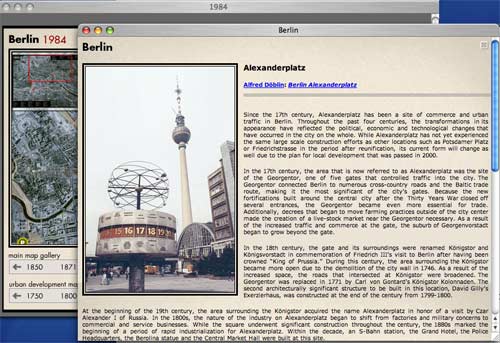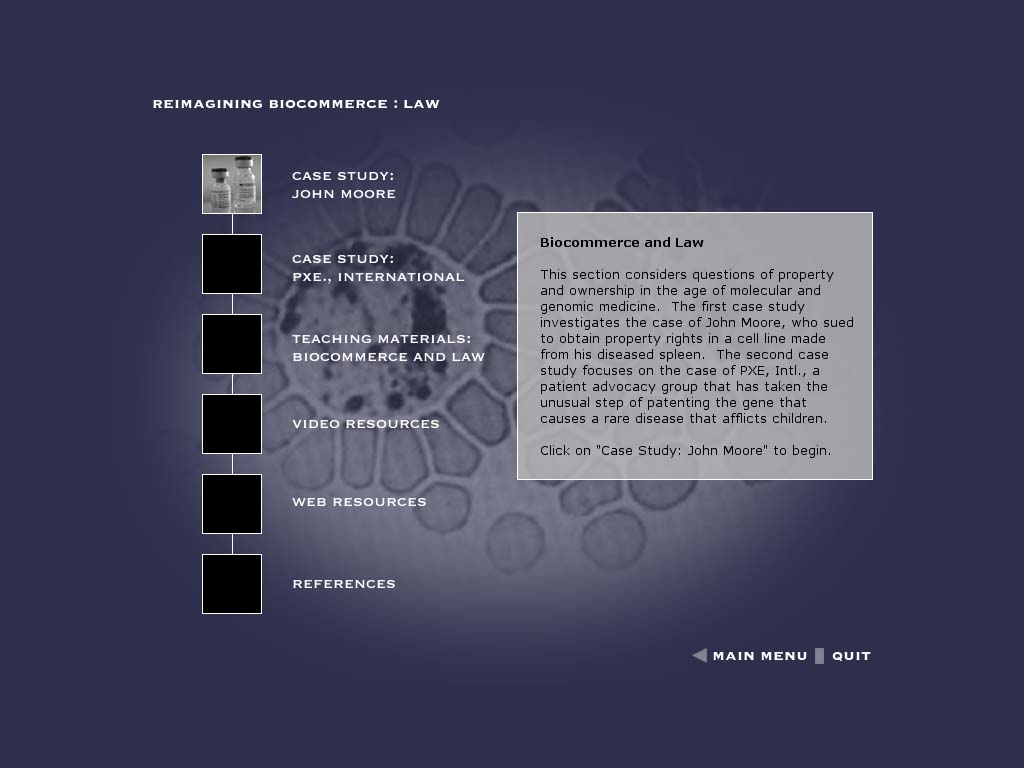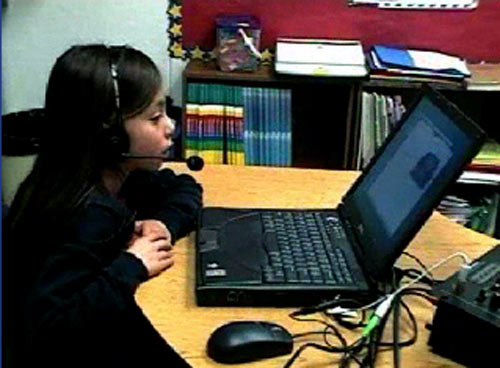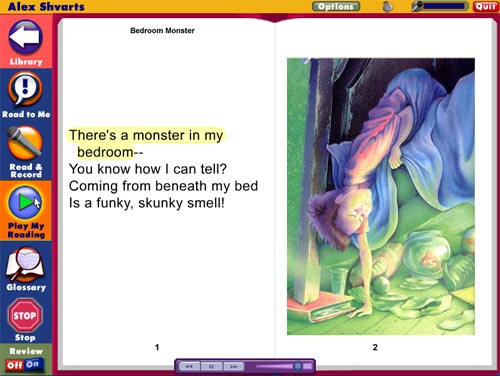« October 2005 | Main | December 2005 »
November 22, 2005
"Binding Memories" on Gutenberg-E

After receiving a Mellon grant in 1999, Columbia University Press began awarding $20,000 "Gutenberg-e" awards to scholars with outstanding history dissertations, in order to help these scholars revise their books into digital texts. So far, twelve of these digital books have been published on the Gutenberg-e site, and sixteen more are slated for publication: this makes Columbia University Press the most significantly player the e-publishing field to date. Currently, the texts can be read for free as part of a limited-time free trial offer; for $49.50, one can purchase unlimited online access to a single text and also download it as a PDF file.
Columbia and the Mellon Foundation must be commended for their efforts to move academic publishing into a perhaps more economically viable online environment: at the same time, the e-Gutenberg project still seems to express a fair amount of anxiety about the idea of digital textuality. Given the ambitious nature of the project, the site is suprisingly drab and monochrome - the only explanation I could think of for the lack of attention to design was that perhaps the guiding forces behind Gutenberg-e imagined that graphic interest would somehow detract from the serious nature of the scholarly work on the site.
A lack of concern for the medium extends to many of the texts as well, which for the most part limit their digital enhancements to hyperlinked explanations of concepts and the inclusion of still images and audio and video clips. Some of this material is wonderful: for example, Kenneth Este's A European Anabasis - Western European Volunteers in the German Army and SS, 1940-1945 features a compelling audio interview with the Belgian soldier Franz Vierendeels. But Estes, like most of the other authors, does not rework his text during the process of digital conversion: he merely illustrates it.
One notable exception to this rule is Heidi Gengenbach's Binding Memories: Women as Makers and Tellers of History in Magude, Mozambique. Gengenbach, who now teaches history at Harvard, actively embraces the digital medium and uses it to try to restructure her monograph. As she explains in the introduction to her book, moving from a print medium to a digital medium allowed her organize her monograph spatially, so that the reader was confronted with a title page in which "chapters" were placed in on the page in a way that encouraged exploration rather than front-to-back navigation through a text. Gengenbach writes:
Unlike some other recent electronic publications in history, this book was not "born digital." Its origins lie in a doctoral dissertation researched and written (on paper) several years before historians began crafting scholarship with cyberspace in mind... [Still], even back then, the arguments I wanted to make about women and history in Magude fit awkwardly with the conventions of academic history and the print monograph. There really was no singular beginning or end to my story, nor could the middle be narrated in a straight line. The study's subject, the relational practices whereby rural Mozambican women remember and communicate the past, was too varied, both in form and in angle of interpretation, to be subordinated neatly to any one rendering of their lives.
Gengenbach's title page thus does not simply illustrate the content of her various chapters: it also serves as a visual metaphor for her research methods, allowing the reader to see the way in which Gengenbach envisions the field of information engaged by her scholarship. According to Gengenbach, this view into her process gives the text a kind of "epistemological candor" that might be lacking in a text which relies on the classical structure of academic narrative to conceal the somewhat messier process of academic research. As Gengenbach writes:
Certainly, as others have noted, e-publication enables historians to share their sources with readers and thus opens scholarly analysis to wider, more participatory debate. But the truly radical potential of cyber-history rests in its power to expose the social basis - the ineluctably dynamic and located subjectivity - of historical analysis and in the power of historians to translate this self-exposure into creative new paradigms for constructing the past.
Another good use of the digital page to structure information is Gengenbach's audio histories section (below), which catalogs some of the interviews Gengenbach did for her fieldwork.

The page works well as a quick access database: clicking on the photographs of the interview subjects themselves brings up a biography and the audio interviews (which are in Portuguese and Shangaan ), while clicking on the links brings up English-language transcripts of the interviews. But more importantly, it provides another visual metaphor for Gegenbach's research process, allowing her to put her scholarly observations about storytelling on the same page as the stories themselves, thus foregrounding the story-telling qualities of scholarship itself.
Given Gengenbach's willingness to really think through the implications of making her work digital, I find myself wondering what she might have done if she had more sophisticated tools and a designer at her disposal. I'm hoping that Columbia Press allows the site to gradually evolve, and that future Gutenberg-e scholars might take inspiration from Gengenbach's example, allowing the medium to breathe new life into their scholarly efforts.
Posted by lisalynch at 2:50 PM
November 20, 2005
The Book as Landscape: Hypermedia Berlin

"Hypermedia Berlin represents an extraordinary achievement in accessible urban representation. Great cities like Berlin are densely layered and almost inconceivably complex palimpsests. Attempts to represent that historically-layered complexity have, for generations (since the rise of urban research), foundered on the rock of the printed page.
- Peer Response by: Philip Ethington, University of Southern California, 9.14.05
The page itself, one of the most fundamental components of the book, is undergoing a material and conceptual transformation as the static, flat, delimited space of the paper page gives way to the animated, interactive, unlimited, deep space of the digital book. "Hypermedia Berlin" - which grew out of a collaboration between the Stanford Humanities Laboratory (SHL) and UCLA's Center for Digital Humanities (CDH) - represents an excellent example of the formal innovation made possible by digital media. This project crafts an entirely new kind of page out of a gallery of highly detailed, interlinked, illustrated and annotated map interfaces, which can be navigated with an easy-to-use zoom feature. In other words, the page itself has been re-oriented to "landscape." This alternative book form organizes its content topographically and chronologically; encouraging readers to interact with and consider its subject differently. History, the map interface tells us, is tied as strongly to place as it is to time.
Presently, the site offers 25 navigable maps, "each map, corresponding to a key date in Berlin's nearly 800 hundred year history, consists of an array of virtual reality "hotspots," popup information screens, and critical essays documenting and analyzing significant regions, architectural structures, events, people, and cultural products from that moment in Berlin's history." Using the zoom function, students and scholars can study the maps in detail. The overlay function, which makes maps semi-transparent so that one can be placed on top of the other, allows the reader to analyze changes in Berlin's landscape.

"Hypermedia Berlin" can be used as a multimedia teaching tool as well as a project-based learning environment. For an animated walk-through, visit the "Hypermedia Berlin" project page on the Vectors website.
Over the next two or three years, principle investigators Todd Presner and John Maciuika plan to work with developers to foster new growth for the site. They are connecting the site to a searchable archive of images, hypertext resources and primary sources on Berlin. And they are developing a content management system that will provide a multi-tiered authoring platform. This system will accommodate peer-reviewed contributions and open contributions. The open contribution platform will function like a blog, but posts will be date and location stamped to correspond to a site on the map. For example, a blog post could be connected to a location recently visited, a former residence, or the residence of a relative or ancestor. By providing such a platform, Presner hopes to create a "community memory of place," a memory that will continue accruing over time, as students, scholars and enthusiasts "build" their stories into the landscape.
"Hypermedia Berlin" presents an intriguing possibility. If it is able to harness the power of the network to attract a sufficiently large cache of stories and images and if it can continue receiving an unlimited and ever-growing flow of contributions, then it will succeed in reflecting (in the virtual space) the evolution and complexity of the city itself. An exciting prospect.
Posted by kim white at 5:02 PM
November 17, 2005
Biofutures: Owning Body Parts and Information

Biofutures, a DVD-ROM about biotechnology and culture currently under development, grew out of conversations between three humanities scholars who shared a common interest in emerging forms of biotechnology. Rob Mitchell, an English Professor at Duke University affiliated with the Duke Institute for Genome Science and Policy and Phillip Thurtle, a molecular biologist turned anthropologist who now teaches at the University of Washington, had both encountered - translation problems - when trying to teach humanities students about biotechnology.
The two professors realized that if they were going to clearly communicate the social, cultural and legal issues that lay behind the case studies they tried to present, they had to find a simple way to get the science across. Aware that a conventional textbook or course pack would only bury their students in a tangle of sometimes overwhelmingly technical information, they decided to create a digital text of their own that could both sift through out the different types of issues connected with biotech research while providing accessible - and lively - explanations of the science involved.
In order to come up with a design for their project, Mitchell and Thurtle teamed up with Helen Burgess, a new media scholar teaching at the Program in Digital Technology and Culture at Washington State. Burgess had recently worked on DVD project that had similar goals of setting up a dialogue between science and society: The Red Planet: Scientific and Cultural Encounters with Mars (University of Pennsylvania Press, 2001). The team chose to divide the text into three primary chapters: Biology, which focuses primarily on the physiological, chemical, and technological processes that make biocommerce possible; Law, which discusses continuities and changes in intellectual property law that have determined the shape of contemporary biocommerce; and Culture, which examines the ways in which biocommerce has been represented in film, novels, and recent art projects.

Each chapter in turn features two 'case studies,' which provide a strong underlying narrative. Moving from page to page in the case study narratives, the user encounters clickable items that provide different kinds (and levels) of explanatory item, including video interviews with experts from the fields of genetics, history, and law; video footage and computer animations of basic lab genetic procedures essential to biocommerce; and clips from popular films that have helped establish public perceptions of the possibilities and dangers of biocommerce. Beyond these "case studies," chapters also provides teaching resources and external links.
In developing these items, Burgess has managed to achieve a delicate balance between depth of contextual content and the forward motion of narrative. Since the clickable items are a reasonable length - and the case study are sufficiently compelling - the user never feels sidetracked or distracted by the information presented; the narrative spell is not broken.
One of the most appealing features of Biofutures is that the demonstrations and expert interviews provide a sense of getting first-hand information from many different disciplinary perspectives at once: while many attempts at the cultural studies of science are grounded in a specific discipline (anthropology, sociology, literary study), the truly interdisciplinary nature of this project makes it teachable in a wide variety of classrooms. According to Burgess and Mitchell, the scientists involved in the expert interviews have gotten more interested in the idea of teaching cultural and social perspectives through their participation in the project, and are looking forward to the release of the DVD.
A detailed description of the project is available here
Posted by lisa lynch at 11:32 AM
November 14, 2005
MIT Open Courseware: Introduction To Biology

Ever since the MIT Open CourseWare project launched eighteen months ago, the e-learning community has been debating about whether or not MIT's ambitious program is living up to its goal of providing 'free, searchable, access to MIT's course materials for educators, students, and self-learners around the world.' As Ben Vershbow noted in the if:book blog in August, many of the OpenCourseWare listings are essentially just syllabi with a few assignments, i.e., neither particularly radical nor particularly effective as online classes.
There are, however, several standouts on the site, and I'd like to discuss one of them: a Spring 2005 Section of Introduction to Biology. This is not the only MIT Open CourseWare selection to offer video lectures; currently, about 20 courses include video. Nor does it necessarily represent the future direction of the Open Courseware project - for reasons I'll detail below, MIT is ambivalent about relying heavily on video lectures. But it is a good example of a course that is close to fulfilling MIT's mandate of providing the MIT experience to anyone who logs on to the site.
One of the reasons why the Open Courseware biology offerings are particularly strong is that MIT has a special working group - an offshoot of the Howard Hughes Medical Institute - devoted especially to improving undergraduate biology education. This means that this class has been put together with a lot of thought about how best to teach biology to a students coming from a range of backgrounds and with a variety of different interest levels. It also means that a good deal of supplementary material is available on the course site, including the MIT Biology Hypertextbook, an introduction to the molecular biology that's included in the course in a hyperbook format. Thus, unlike many of the other courses on the MIT site, it is almost possible to use the Introductory Biology courseware as a complete digital text for beginning biology. The site does recommend that students purchase an introductory biology textbook (they recommend Scott Freeman's Biological Science), if only to serve as a 'detailed reference source' on the concepts that are highlighted in the lecture and section materials of the course.'
HHMI's emphasis on translating biology for undergrads is also evident in the video lectures. The course is co-taught by Professor Graham Walker, director of the HHMI Education group, and environmental sciences Professor Sallie W. Chisholm. Both professors are engaging, lucid and fun to watch. Walker in particular spends a lot of time explaining the practical implications of what he's talking about, drawing on media stories and medical accounts to pique student's interest.
So why am I making the argument that this site is a "digital textbook?" Because I found the lectures in themselves could be used as a biology text -- complete with illustrations and diagrams (here, sketched out on the board). Of course, they aren't optimally functional -- ideally, they could be embedded in a program such as TK3, with the class handouts and "hypertextbook" made available in a more active architecture that responded to the time-based nature of the lectures. Or the lectures themselves could be made searchable, so that a student could track all references to evolution, for example, over the course of the semester.
There's an interesting paradox here. These lectures work wonderfully as a text precisely because they are not in themselves interactive pedagogy. Walker and Chisolm monologue in front of a large (unseen) audience and don't entertain any questions: questions get asked during discussion sessions. They are also utterly conventional in terms of their own use of instructional technology: mainly, they rely on the blackboard, with occasional recourse to digital slides.
The digital slides are a problem for the MIT folks. Every time Walker projects something like a Newsweek photo or a cartoon from the New Yorker, the screen goes black except for the phrase 'removed due to copyright concerns.' This is more than a little frustrating. Since both professors use the board frequently, it is not possible to simply listen to the lectures; at the same time, staring at a black-out screen has the effect of making one's attention drift from what is being said.
It seems to me that this anxiety about copyright is a primary factor in preventing MIT from putting more video classes online. MIT explains things a bit differently: video lectures, they say, require too much bandwith to be universally accessible, and they require too much storage space on the MIT server. I'm a bit skeptical of these claims. One can make the video lectures available to those with faster connections without depriving the less-endowed access to syllabi and assignments, and I'm not buying the claim that MIT is running out of storage space (quick! hook up another firewire to the mainframe!). Instead, I see the Introduction To Biology class as a tantalizing hint of what might be possible if there were less anxiety about extending fair use in the classroom to the larger world of online learning.
Posted by lisa lynch at 12:23 PM
November 4, 2005
Soliloquy Reading Assistant: Turning the Computer into A Personalized Tutor

Most of the projects on nexttext highlight ways in which electronic media is changing the format of the textbook--extending and enhancing content. But digital technology also presents an opportunity to change the format of the learning experience, extending and enhancing the teacher. Our most recent profile, SAT Math Pro, used animation and audio software to capture and present a real teacher explaining a math problem. Soliloquy Reading Assistant takes it a step further, using voice recognition software which "listens" as a student reads out loud, and responds with audio-visual commentary tailored to the individual needs of that reader.
This simulated tutor extends the reach of the teacher, providing the kind of individual attention that is (according the website) scientifically proven to improve fluency. To use Soliloquy Reading Assistant, the student puts on a headset (see above), logs in and selects a book from the "library." Content is provided by leading educational publishers including: Caras, Pearson, Scott Foresman, and Charlesbridge Publishing. Once a book is selected, the student can choose to hear it read via the "Read to me" feature or she/he can simply begin reading into the microphone. Voice recognition and analysis software "listens" and when the student mispronounces a word it responds by reading the word correctly. If the student hesitates over a word, but does not mispronounce it, the word is added to the "review" list. Upon completion of the story, students can play back their voice recording and hear how they did. The "Review" feature identifies words the student has mastered as well as words that need practice. To help build vocabulary, students can take advantage of a context sensitive glossary. Students are further engaged by a system of "Power Points" awarded each time a story is completed. The more students read, the more Power Points they will rack up. A "Progress Screen" shows the results of their current reading and a log of their past readings.

As you can see in the screen grab above, the electronic version looks very much like the print book, fully illustrated with large, easy-to-read type. Soliloquy also has additional accessibility settings to help users with low vision or motor skills.
Teachers using Soliloquy also have an array of tools at their disposal. They can quickly check on the progress of each student from their own computer, listen to the students' audio recordings and make automatic assignments.
Through two basic types of reports, they can see how much students read and at how many words per minute.
The Reading Assistant Manager's 'Usage Report' provides the following information for each student: reading time, listening time, quiz time, total usage, number of completed titles, last session date and total number of sessions - Reports and data can be exported to be included in grant proposals, larger reports, and student information systems.
The 'Fluency Report' provides teachers with: date of last session, number of completed titles, average text level, total number of readings, Words-Correct-Per-Minute for the first and last readings, as well as average Words-Correct-Per-Minute. Teachers can also create custom reports, choosing from a list of topics. Administrators only may also create reports based on student criteria such as ESL, free lunch, ethnicity, etc.
Breakthrough products like Soliloquy Reading Assistant are exciting because they allow us to start thinking about a future where simulated teachers are built into all electronic textbooks. The question to ponder is: what will the emergence of the robotic teacher mean for the future of education itself? There are some clear advantages. This technology greatly improves learning for students enrolled in large classes where they get little individual attention. I'm concerned, however, that as these technologies develop, they might be seen as acceptable replacements for real teachers.
Another drawback: a robotic tutor can't provide uniquely human forms of encouragement that are conveyed via gesture, expression and a whole array of non-verbal communications which give students positive messages about their abilities and their potential. On the flipside: a robotic tutor can't provide uniquely human forms of discouragement that are conveyed (intentionally or unintentionally) via gesture, expression and a whole array of non-verbal communications which give students negative messages about their abilities and their potential.
I'll just add one more subjective response I had to the Soliloquy demo. To make the point clear, I'll contrast it with the response I had to SAT Math Pro. Since I knew the "virtual teacher" was Colleen King, a real person and a teacher, I felt the voice was somehow embodied and the message was trustworthy. The Soliloquy tutor, by contrast, was an unknown entity, who sounded more like a voice actor than real teacher. It's a subtle thing and I don't know if it will register with kids, but the slickness of the vocal performance made it more difficult for me to engage.
But all criticism (and future speculation) aside. Soliloquy Reading Assistant is a superb example of "what happens when textbooks go digital."
Posted by kim white at 7:41 AM
